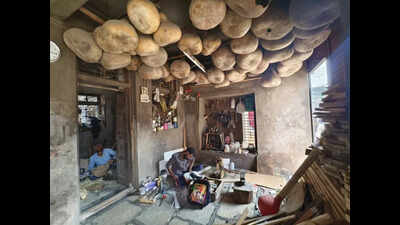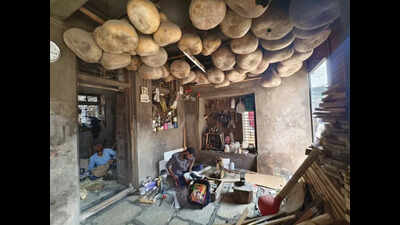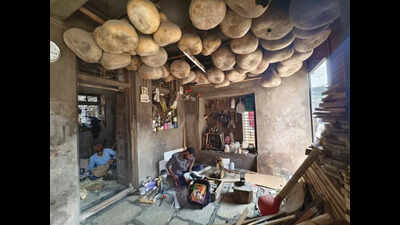Trending
Miraj’s famed sitar finds market abroad but not enough hands at home to fashion them
Pune: The handmade sitar created in Miraj in Sangli district of Maharashtra is now travelling to the US, Germany and the UK for musicians based there.
The instrument was made popular by Pandit Ravi Shankar abroad with Vilayat Khan adding to its glory and George Harrison strumming it in Norwegian Wood giving it a boost.
The art and craft of making the string instrument is 300 years old in Miraj. The city shot to popularity when eminent artists, including Pandit Bhimsen Joshi, Pandit Venkatesh Kumar, Ustad Rashid Khan, sitar maestros Shujaat Khan, Ustad Shahid Parvez Khan, and music director Hridaynath Mangeshkar used the instruments made here.
Generations of craftsmen in Miraj have toiled in cramped spaces to prepare these melodious instruments. Makers now say the tradition of crafting a sitar is fading away and the industry which once employed thousands has a few hundred artisans left.
Sitar maker Mohammed Saeem Shikalgar studies medicine. "During the pandemic, there was demand only for medical services and essentials, so I decided to pursue medicine because in the future, if the sitar-making business fails, then as a backup, it is an option," he said.
The process of converting a pumpkin into the instrument is full of patience, skill and needs deep knowledge of sound. Depending on the design and amount of carving required, each sitar can take about 20-25 days to make.
Sitar maker Imran Salim said the pumpkin is immersed in water and made soft. "It is then dried thoroughly to remove the moisture and harden the shell. It is carved out, put into a mould and shaped to create a hollow body. It is polished and other components like the the neck, the bridge, the turning pegs and strings are added," he said.
The rise of mass-produced instruments has also made it harder for traditional sitar makers and many want a dedicated training centre to cultivate new talent.
End of Article
FOLLOW US ON SOCIAL MEDIA











